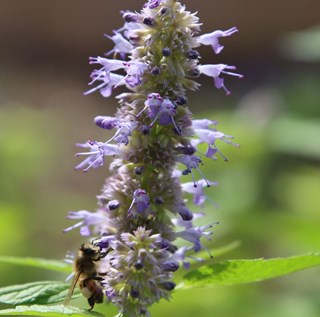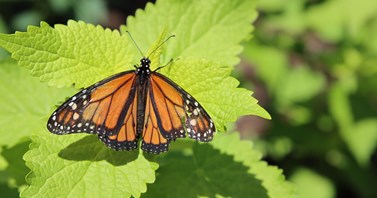City Hall Butterfly Garden

LAKELAND, FL (July 9, 2021) | With pollinators in a serious decline, it is more important than ever for people to take part in their conservation. One of the most rewarding ways to do this is by creating a butterfly habitat, and the City of Lakeland has created a butterfly garden in front of City Hall. Bill Koen, Horticultural Specialist for the City of Lakeland said, “The new butterfly garden at City Hall was designed to attract many types of butterflies. In addition to this garden, we have butterfly gardens at Common Ground Park, Hollis Garden, and the Main Library on Lake Morton.” He added, “Although these are designated butterfly gardens, we make a point to include butterfly-attracting plants in many of our City landscaping projects.” You can plant a garden anywhere (backyard, front steps, raised deck) and a pollinator will benefit from it. But if your intent is to create a butterfly sanctuary that attracts many species and allows them to grow and multiply, you'll want to choose a location that has sun and shelter.
 There should be a part of the garden that gets at least 5-6 hours of full sunlight each day. Since butterflies are cold-blooded, they seek out warmth first thing in the morning. Although you don't want a shady garden, carefully placed trees and shrubs will provide necessary shelter from the wind. They also provide a place for butterflies to roost at night or to hide from predators. Many trees and shrubs are also food sources for caterpillars.
There should be a part of the garden that gets at least 5-6 hours of full sunlight each day. Since butterflies are cold-blooded, they seek out warmth first thing in the morning. Although you don't want a shady garden, carefully placed trees and shrubs will provide necessary shelter from the wind. They also provide a place for butterflies to roost at night or to hide from predators. Many trees and shrubs are also food sources for caterpillars.
There are two types of plants you'll need to keep in mind when designing a butterfly garden. There are plants that provide nectar to butterflies and there are plants that provide food for caterpillars. The best butterfly gardens provide both of these so that butterflies will come to your garden to feed, lay eggs and grow new generations.
The newly-planted Butterfly Garden at City Hall contains attractants like Golden Jubilee (Agastache Rugosa). This fragrant lavender flower also has incredibly fragrant golden leaves. Other plants in the garden include Orange Marmalade (Crossandra Infundibuliformis), Blue Porterweed (Stachytarpheta Jamaicensis), and Lime Sizzler (Hamelia Patens). These plants have two characteristics that butterflies can’t resist; they have colorful blooms and they are nectar-rich. The new butterfly garden also has Tropical Milkweed and Variegated Tropical Milkweed (Asclepias Curassavica). Milkweed is very important for Monarch Butterflies because of the blooms but most importantly because the butterflies lay their eggs and Milkweed produces a hormone that protects caterpillars from predators.
Contact
Kevin Cook
Director of Communications
City of Lakeland
863.834.6264
Kevin.Cook@LakelandGov.net
About Lakeland
The City of Lakeland was incorporated in January 1885 and has grown to become one of the largest inland communities in Florida. With a current population of over 100,000, Lakeland continues to grow. It has been designated a Standard Metropolitan Statistical Area by the US Census Bureau for over 30 years. With tourist attractions and gulf beaches only an hour away, Lakeland continues to capitalize on its ideal central Florida location along the I-4 corridor. The City owns and operates Lakeland Electric, the third-largest publicly owned utility in Florida and it was one of the first to offer power in the Sunshine State over 110 years ago.
For additional information about the City of Lakeland, please explore LakelandGov.net.
Citizens are also invited to follow the City on social media.






